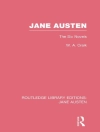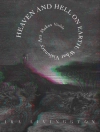Monstrous textuality emerges when Gothic narratives like Frankenstein reflect the monstrous in their narrative structure to create narratives of resistance. It allows writers to meta-narratively reflect their own poetics and textual production, and reclaim authority over their work under circumstances of systemic cultural oppression and Othering. This book traces the representation of other Others through Black feminist hauntology in Toni Morrison’s Beloved (1987) and Love (2003); it explores fat freak embodiment as a feminist resistance strategy in Angela Carter’s Nights at the Circus (1984) and Margaret Atwood’s Lady Oracle (1976); and it reads Atwood’s Madd Addam trilogy (2003–13) and Shelley Jackson’s Patchwork Girl (1995) within a framework of critical posthumanist and cyborg theory. The result is a comprehensive argument about how these texts can be read within a framework of critical posthumanist questioning of knowledge production, and of epistemological exploration, beyond the exclusionary humanist paradigm.
Tabela de Conteúdo
Introduction: Teratologies
Troubling Genealogies: Monstrous Textuality and Narratives of Resistance in Mary Shelley’s Frankenstein
I: What Moves at the Margin
2 Haunted Narratives
3 Monstrous Narratives
II: A Female Monster Larger Than Life
Introduction
4 Reframing Narratives
5 Corporeal Discourses
6 ‘A Female Monster Larger than Life’: Fatness and Resistance
III: Hideous Progeny
Introduction
7 Posthuman Reading Practices
8 Posthuman Writing Practices
9 Posthuman Bodies in/as Narrative
Conclusion
Conclusion: ‘The Promises of Monsters’
Notes
Bibliography












